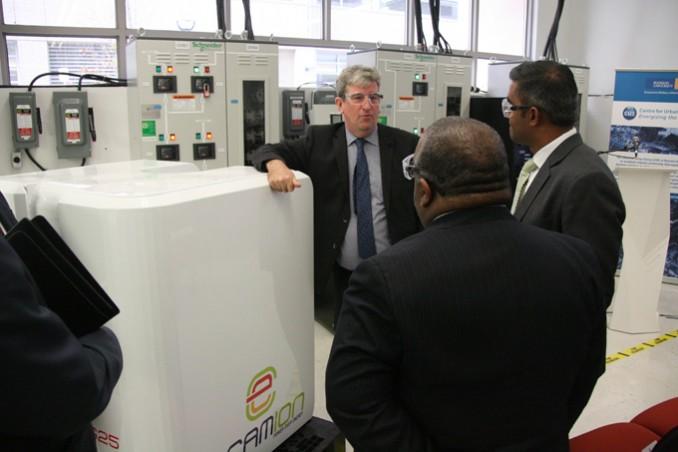By: Justin Chandler
Ryerson announced this past week that it signed agreements with three Indian technology companies to support energy research at the university. The research will focus on microgrids and energy storage units.
Ryerson officials signed agreements to work on microgrid technology with Tata Power, India’s largest power company, and international tech company Tech Mahindra while in India as part of an Ontario trade mission.
MOUs are how many long-term contracts at Ryerson begin, said university spokesperson Michael Forbes in a written statement provided to The Eyeopener. He said the agreement with Tech Mahindra includes over $1 million in funding for research at Ryerson.
Ryerson also signed an MOU with Scarborough energy company eCamion Inc. and L&T Technology Services, India’s largest engineering company. That agreement was announced Feb. 5 and will focus on the development of energy storage units that will be simulated and tested at Ryerson, said Forbes.
Researchers at Ryerson will have the opportunity to test and develop the technologies needed to create effective microgrids—small, self-sustaining power grids that can be built onto municipal power grids.
Bob Singh, a research fellow at the Ryerson Centre for Urban Energy (CUE), said microgrids can improve the reliability of power grids and give consumers control over how they get their electricity.
Microgrids are smaller power grids that can be built onto municipal grids. Microgrids use their own power sources such as wind turbines or solar panels to generate electricity. They can also store power from these sources or from the grid, allowing users to power buildings independently from the grid.
“In 10 to 15 years, every city will be full of microgrids and that’s no exaggeration,” Singh said. He predicts that in 15 to 20 years the Toronto hydro-distribution system will be a collection of microgrids, which he says will be cheaper to install than new transmission lines.
The possibilities are significant but currently limited by technology. Singh said voltage and frequency must be as tightly controlled in microgrids as they are on large-scale power grids. To do so, “very smart and sharp controls” must be developed and tested, he said.
That’s where Ryerson’s newly announced agreements come in.
Currently there are multiple storage units and controls for microgrids in development. Singh said it is not yet known if these new technologies “work effectively together” or if “they start fighting with each other.”
Working with power and tech companies, the CUE can develop and test the technologies needed for effective microgrids in their labs. The technology needed to operate an effective microgrid could be marketable and accessible “well within five years.”. Singh said Indian companies are likely interested in microgrids because the country has a poor electricity supply system but great potential for solar power. Villages not connected to power grids could create microgrids to meet their needs.
A very effective application of a microgrid would be to power a hospital, Singh said. If hospitals had microgrids, they could store power and use it to support their energy needs in the event of a power failure on the main grid, negating the need for diesel generators.
It would also be possible for multiple homes in a community to create microgrids.











Leave a Reply